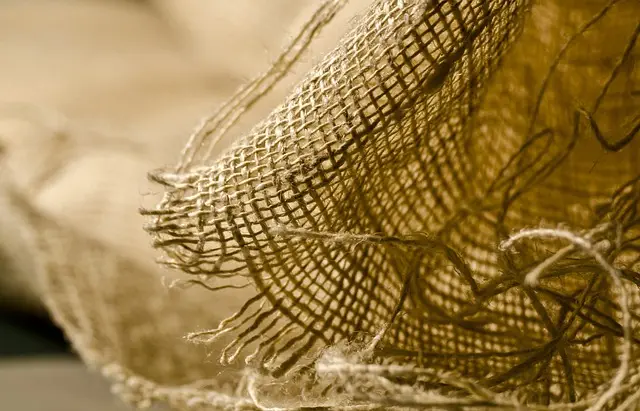Muscle soreness post-exercise manifests as acute or delayed onset muscle soreness (DOMS), with acute soreness occurring immediately and DOMS appearing within 24 to 72 hours after intense activity. Acute soreness is typically due to minor muscle fiber tears or joint inflammation, while DOMS is linked to microtraumas in the muscle fibers. Kratom, an herbal supplement from Southeast Asia, has been explored for its potential analgesic effects in managing muscle soreness through its active alkaloids like mitraphylline and 7-hydroxymitragynine, which may interact with opioid receptors to ease pain. Kratom strains such as Maeng Da and Bali are popular for this purpose. However, it's crucial to consider kratom pricing, legal status, and potential side effects, and consult healthcare professionals before use due to the varying quality and efficacy across vendors. The scientific community is investigating kratom's role in natural muscle pain relief, with initial studies suggesting its effectiveness. Users should be mindful of strain selection, dosage, and personal health considerations to ensure safe and effective use for muscle recovery. By carefully evaluating the pricing landscape and selecting reputable suppliers offering lab-tested products, consumers can optimize their kratom experience while maintaining financial prudence.
Muscle soreness can be a persistent challenge for both athletes and casual fitness enthusiasts. Exploring natural remedies, many turn to kratom, a botanical substance known for its potential therapeutic properties. This article delves into the interplay between muscle soreness and kratom’s role in providing relief. We will examine the science supporting kratom’s impact on muscle recovery, offer insights into navigating kratom pricing for cost-effective management of soreness, and provide a comprehensive understanding of how this plant-based compound can be a valuable addition to your wellness routine.
- Understanding Muscle Soreness and Kratom's Role in Relief
- The Science Behind Kratom and Its Effect on Muscle Recovery
- Navigating Kratom Pricing for Optimal Muscle Soreness Management
Understanding Muscle Soreness and Kratom's Role in Relief

Muscle soreness can manifest as a result of intense physical activity, such as exercise or heavy lifting, and it often leads to discomfort that can range from mild to severe. This soreness is typically categorized into two types: acute and delayed onset muscle soreness (DOMS). Acute soreness appears immediately after the exertion and is generally a result of minor injuries like muscle fibers tearing or joint inflammation. In contrast, DOMS usually sets in 24 to 72 hours post-exercise, stemming from microtraumas within the muscle fibers. Understanding the root cause of muscle soreness is crucial for effective management and relief.
Kratom, a botanical derivative from the leaves of Mitragyna speciosa, has been traditionally used in Southeast Asia for its stimulant and sedative effects. Within the context of muscle soreness relief, kratom’s alkaloids, such as mitraphylline and 7-hydroxymitragynine, are believed to play a role in pain management. The plant’s analgesic properties can help alleviate the discomfort associated with muscle soreness. Users often turn to kratom strains like Maeng Da or Bali for its potential soothing effects on the musculoskeletal system. Kratom pricing can vary depending on strain potency, vendor, and form (leaf, powder, capsules). It’s important for individuals to consider their specific needs and consult with healthcare professionals before incorporating kratom into their wellness regimen, especially considering its potential side effects and legal status in different regions.
The Science Behind Kratom and Its Effect on Muscle Recovery

Kratom, a tropical deciduous tree native to Southeast Asia, has been traditionally used for its various therapeutic properties. Its leaves contain alkaloids such as mitragynine and 7-hydroxymitragynine, which are believed to interact with the body’s opioid receptors, potentially offering pain relief and muscle relaxation effects. These compounds may play a role in alleviating muscle soreness by modulating pain perception and reducing inflammation. When it comes to muscle recovery after intense physical activity or injury, kratom might provide significant benefits due to its analgesic properties. Users often report that certain strains of kratom, such as the more energetic varieties like Maeng Da or White Vein, can help them manage post-exercise discomfort and enhance their overall recovery process.
The scientific community is exploring the potential of kratom for muscle recovery, with studies investigating its effects on pain and inflammation. While research is ongoing, preliminary findings suggest that kratom could be a promising natural supplement for those seeking alternative methods to mitigate muscle soreness. For individuals interested in incorporating kratom into their wellness regimen for muscle recovery, it’s important to consider the right dosing and strain to achieve the desired effects. Kratom pricing can vary significantly based on strain potency, vendor, and form (leaf, powder, capsules), so consumers should research and choose a reputable supplier offering high-quality, lab-tested products at competitive prices. This ensures not only the efficacy of the kratom but also adherence to safety standards. Users should always start with a lower dose to gauge their sensitivity and consult with a healthcare provider before integrating kratom into their routine, especially if they have underlying health conditions or are taking other medications.
Navigating Kratom Pricing for Optimal Muscle Soreness Management

When considering kratom for muscle soreness relief, it’s crucial to navigate kratom pricing to ensure both efficacy and economic viability. Kratom, derived from the leaves of Mitragyna speciosa, is recognized for its potential alkaloid content that may contribute to pain management. Prospective users should be aware that kratom products can vary significantly in price due to a multitude of factors including strain rarity, alkaloid concentration, and vendor reputation. It’s advisable to research and compare the prices across different reputable suppliers to find the most cost-effective option without compromising on quality. This not only optimizes your budget but also ensures consistent dosing for optimal muscle soreness management. Additionally, understanding kratom pricing allows users to avoid overpaying for subpar products or underestimating the cost of high-quality kratom strains known for their analgesic properties. By carefully considering the price point and aligning it with your pain relief needs, you can make an informed decision that supports both your health and financial well-being.
Muscle soreness can be a significant hindrance to individuals engaged in physical activities, from casual exercisers to professional athletes. The article has explored how kratom may play a beneficial role in alleviating this discomfort, with insights into the science underlying its effects on muscle recovery and practical advice on navigating kratom pricing for effective soreness management. By understanding the nuances of kratom’s impact on muscle healing and making informed decisions about cost, consumers can better incorporate this natural remedy into their wellness regimen. Overall, kratom emerges as a promising option for those seeking to maintain an active lifestyle without the constraints of persistent muscle soreness.






